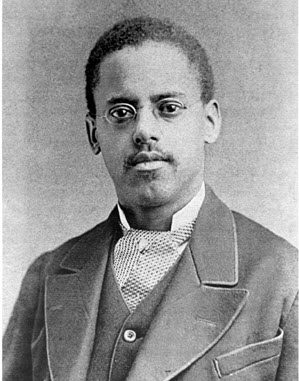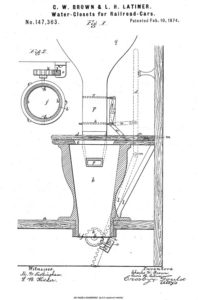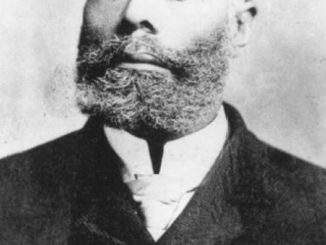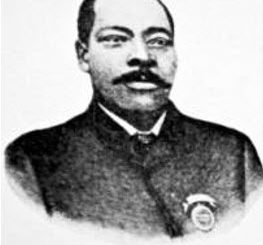
Over the years, the railroads have benefited from a diverse workforce. Most people think of the Transcontinental Railroad as the most varied workgroup with Asians, primarily Chinese, providing the labor to build the railroad in the West. However, railroads have a much more varied history than that. For example, German and Irish immigrants provided a large part of the workforce in the North, while the South utilized slave and convict labor. Of course, railroads and Pullman Porters go hand in hand when examining railroad history as well. However, each week this month, we will highlight an African American inventor and his contribution to the railroads.
Lewis Howard Latimer (1848-1928)
 Lewis Latimer was born in Chelsea, Massachusetts, in 1848 as the youngest of four children to parents who escaped slavery in Virginia. His father, George Latimer, was defended by Frederick Douglass after being captured as a slave fugitive in Boston. After the Dred Scott decision in 1857, his father disappeared, and Latimer began working to help support the family.[1] After working in the U.S. Navy during the Civil War, Latimer returned to Boston and worked at a patent law office where he taught himself mechanical drawing and drafting. He later worked for Alexander Graham Bell and drew the blueprints for Bell’s patent for the telephone and also translated documents into French and German.
Lewis Latimer was born in Chelsea, Massachusetts, in 1848 as the youngest of four children to parents who escaped slavery in Virginia. His father, George Latimer, was defended by Frederick Douglass after being captured as a slave fugitive in Boston. After the Dred Scott decision in 1857, his father disappeared, and Latimer began working to help support the family.[1] After working in the U.S. Navy during the Civil War, Latimer returned to Boston and worked at a patent law office where he taught himself mechanical drawing and drafting. He later worked for Alexander Graham Bell and drew the blueprints for Bell’s patent for the telephone and also translated documents into French and German.
On February 10, 1874, Latimer filed for a patent for an improved water closet (toilet) on railcars. According to the patent, the toilet “is neither agreeable to use nor wholly safe, the draft through the hopper being always excessive while the annoyance from dust, cinders, and other matters thrown up from the track is so great as to forbid or discourage the use of the apparatus except under extreme circumstances.”[2] Latimer’s invention pivoted the bottom of the toilet when the lid was open and closed so that objects did not fly up into the bathroom or railcar. As a result, Latimer made long-distance train travel more comfortable and bearable for all.
 Latimer also began working at U.S. Electric Lighting Company in 1880, when Thomas Edison patented his light bulb, which had a short life as the carbonized bamboo filament burned out quickly. Four years later, Latimer improved the light bulb and patented a way to make the carbon filament more durable. By packing it in cardboard, his filaments were cheaper, more practical, and lasted longer.[3] Two years later, Latimer invented the forerunner of the air conditioner.
Latimer also began working at U.S. Electric Lighting Company in 1880, when Thomas Edison patented his light bulb, which had a short life as the carbonized bamboo filament burned out quickly. Four years later, Latimer improved the light bulb and patented a way to make the carbon filament more durable. By packing it in cardboard, his filaments were cheaper, more practical, and lasted longer.[3] Two years later, Latimer invented the forerunner of the air conditioner.
————————————————————————————
[1] “Lewis Howard Latimer,” Biography.com (A&E Networks Television, April 2, 2014), https://www.biography.com/inventor/lewis-howard-latimer.
[2] “USA100147363,” USPTO.gov (United States Patent and Trademark Office), accessed February 6, 2022, https://pdfpiw.uspto.gov/.piw?PageNum=0&docid=00147363.
[3] “Lewis Latimer,” Lemelson-MIT (Massachusetts Institute of Technology), accessed February 6, 2022, https://lemelson.mit.edu/resources/lewis-latimer.




Be the first to comment